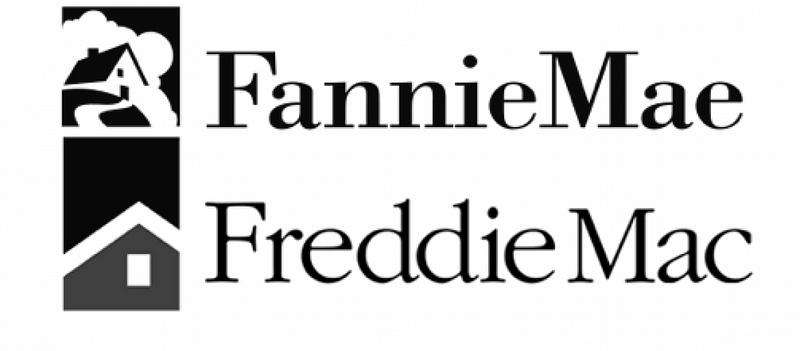
Last Thursday, the Trump administration unveiled its plan to end the Federal conservatorship of two corporations that support half of America’s $11 trillion dollar mortgage market. Since July 2008, the Federal government has operated Fannie Mae and Freddie Mac, two United States government-sponsored enterprises, or ‘GSEs’, through an American legal concept called a conservatorship. If I had my way, they would stay that way forever.
Typically a conservatorship is used by a judge who appoints a guardian or fiduciary to oversee the financial affairs of someone who is unable to properly oversee their affairs themselves. In 2008, the Federal Housing Finance Agency placed Fannie Mae and Freddie Mac under a conservatorship in order to preserve confidence in American financial institutions and stabilize foreign and domestic financial markets.
At the time, the Bush Administration believed that Fannie Mae and Freddie Mac were at risk of insolvency if delinquency rates increased on the mortgages packaged in their mortgage backed securities. Such a failure would have been catastrophic considering that the two corporations together “touch[ed] nearly half of the nation’s mortgages by either owning or guaranteeing them,” according to
The New York Times
.
But it wasn’t just the sheer quantity of assets on Fannie Mae and Freddie Mac’s books that led the two government-sponsored enterprises to a federal conservatorship. At the time, the debt securities which Fannie Mae and Freddie Mac issued were “widely owned by foreign governments, pension funds, mutual funds, big companies and other large institutional investors,” the
Times
reported.
The Bush Administration decided to place the two mortgage corporations under conservatorship; as such, the U.S. Government could ensure the stability of the market by bankrolling Frannie Mae and Freddie Mac’s guarantees. The application of this theory is backed by the principle that the U.S. Treasury may advance virtually unlimited funds; they are constrained only by the Federal government’s self-enforced debt ceiling.
In 2008, President Bush signed into law the Housing and Economic Recovery Act, increasing the national debt ceiling by $800 billion to provide the Treasury with flexibility in order to support the now “federalized” mortgage securities organizations, according to congress.gov.
In a flash, a Republican president had signed onto what former Federal Housing Finance Agency Director James B. Lockhart called “one of the most sweeping government interventions in private financial markets in decades.”
Since taking over management and operations of the two corporations, the U.S. Government has actually profited from what started out as a costly endeavor.
According to
The Wall Street Journal
, the two corporations have now paid over $300 billion dollars to the government, including nearly $115 billion more in dividends to the U.S. Treasury than the two corporations received in bailouts. According to
Bloomberg
: “Since 2013, nearly all of their profits have been sent to the Treasury under a policy called the ‘net-worth sweep.’”
But this approach is due to change. On Sept. 6, the Fifth Circuit of Appeals ruled that the U.S. Government’s profit sweep is unconstitutional. With the Trump Administration pushing to privatize the two organizations, the conservatorship that keeps the securities corporations under the watchful eye and stingy purse of the Federal government is in jeopardy.
To clarify, Fannie Mae and Freddie Mac do not lend out mortgage loans themselves. Instead, the two organizations “buy mortgages from banks that originate them, then securitize them and sell those mortgage-backed securities to investors […] [which] reduce[s] mortgage rates by spreading the risk of default and help[s] underserved Americans buy homes,” according to
The New York Times
.
Although Fannie Mae and Freddie Mac have returned to their profitable ways, dropping the two entities from the conservatorship is a difficult endeavor considering that they both “effectively subsidize the 30-year fixed-rate mortgages that are most popular among American home buyers,” reported the
Times
.
Returning the corporations to the private market could threaten the affordable mortgage market, raising rates and shutting out low-income borrowers.
According to Nikitra Bailey, executive vice president of the Center for Responsible Lending, “The [Trump] administration says it is trying to save taxpayers from the risk of another future catastrophic meltdown, but it is essentially turning the system over to Wall Street.”
The political and financial interests surrounding these two entities are the same as they were in 2008 — confidence and stability are the guiding principles. Although Fannie Mae and Freddie Mac might be past the crisis that lead them to conservatorship — namely mismanagement and fear of insolvency — one must question the reasoning behind the push to privatize.
Yes, the investors and hedge funds that bought stock in Fannie Mae and Freddie Mac for pennies on the dollar right after the crisis are set for a windfall if the organizations are privatized.
While many are questioning potentially-expensive government programs like Medicare as a public option, free community college, or cheaper prescription drugs, the same folks who demand policies like PAYGO and still believe in Reaganomics want to take potentially billions of dollars of government revenue off the books. Is that not hubris?
The only people who stand to win here are those who had enough money to buy Fannie and Freddie stock during the Recession. How about all the folks who defaulted on their homes because of predatory lending? Where’s their windfall?
Our mortgage market needs mortgage securities corporations like Fannie Mae and Freddie Mac to spread out the risk of default and make the money creation, fractional reserve banking, possible. Maybe in considering the federal government skimming profits from a formerly-mismanaged and -overleveraged pair of corporations — now successful and thriving and helping the average American thrive — those in power should turn to the old adage: If it ain’t broke, don’t fix it.

















